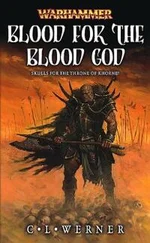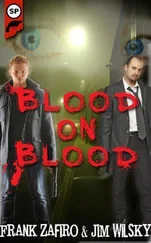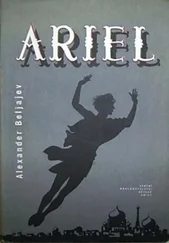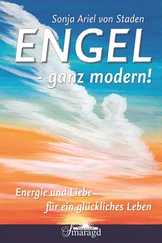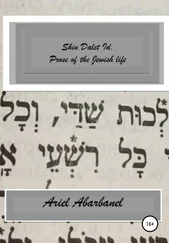Ariel Toaff - Blood Passover
Здесь есть возможность читать онлайн «Ariel Toaff - Blood Passover» весь текст электронной книги совершенно бесплатно (целиком полную версию без сокращений). В некоторых случаях можно слушать аудио, скачать через торрент в формате fb2 и присутствует краткое содержание. Жанр: Религиоведение, на английском языке. Описание произведения, (предисловие) а так же отзывы посетителей доступны на портале библиотеки ЛибКат.
- Название:Blood Passover
- Автор:
- Жанр:
- Год:неизвестен
- ISBN:нет данных
- Рейтинг книги:3 / 5. Голосов: 1
-
Избранное:Добавить в избранное
- Отзывы:
-
Ваша оценка:
- 60
- 1
- 2
- 3
- 4
- 5
Blood Passover: краткое содержание, описание и аннотация
Предлагаем к чтению аннотацию, описание, краткое содержание или предисловие (зависит от того, что написал сам автор книги «Blood Passover»). Если вы не нашли необходимую информацию о книге — напишите в комментариях, мы постараемся отыскать её.
Blood Passover — читать онлайн бесплатно полную книгу (весь текст) целиком
Ниже представлен текст книги, разбитый по страницам. Система сохранения места последней прочитанной страницы, позволяет с удобством читать онлайн бесплатно книгу «Blood Passover», без необходимости каждый раз заново искать на чём Вы остановились. Поставьте закладку, и сможете в любой момент перейти на страницу, на которой закончили чтение.
Интервал:
Закладка:
According to the point of view adopted by these researchers, the inquisitor’s interrogation methods and tortures served no purpose other than to orchestrate a completely harmonious confession of guilt, i.e., of adherence to a truth already existing in the minds of the inquisitors. The use of leading questions and a variety of stratagems, including, in particular, refined torture, were intended to force the defendants to admit that the victim had indeed been kidnapped and tortured according to Jewish ritual, and finally killed in hatred of the Christian faith. The confessions are said to be obviously unbelievable, since the murders were allegedly committed to permit the ritual use of Christian blood, in violation of the Biblical prohibition against the ingestion
p. 12]
of blood, a prohibition scrupulously observed by all Jews. As to torture, it is best to recall that its use in the municipalities of northern Italy, at least from the beginning of the 13th century, was regulated, not only by tractate, but by statute as well. As an instrument for determining the truth, torture was permitted in the presence of serious and well-justified clues in cases in which it was considered truly necessary by the podestà [magistrate] and judges. All confessions extorted in this manner, to be considered valid, had to be corroborated by the inquisitor, later, under normal conditions, i.e., in the absence of physical pain or even the threat of renewed torture [5] In this regard, see E. Maffei's recent Dal reato alla sentenza. Il processo criminale in età communale , Rome, 2005, pp. 98-101.
. These procedures, while unacceptable in our eyes today, were therefore in fact normal, and seem to have been observed in the case of the Trent trials.
Israel Yuval, following in the footsteps of Cecil Roth’s stimulating pioneering study [6] C. Roth, Feast of Purim and the Origins of the Blood Accusations , in "Speculum", VIII (1933), pp. 520-526.
, is more critical and seems more open-minded. Yuval stresses the link between the “blood libel” accusation and the phenomenon of the mass suicides and child murders among the German Jewish communities during the First Crusade. The picture which emerges is one of Ashkenazi Jewry’s hostile and virulent reaction against surrounding Christian society, a reaction finding expression, not only in liturgical invective, but above all, in the conviction that the Jews themselves were capable of compelling God to wreak bloody revenge against their Christian persecutors, thus bringing redemption closer [7] I.J. Yuval, Vengeance and Damnation, Blood and Defamation. From Jewish Martyrdom to Blood Libel Accusations , in "Zion", LVIII (1993), pp. 33-90 (in Hebrew); Id., " Two Nations in Your Womb" Perceptions of Jews and Christians , Tel Aviv, 2000 (in Hebrew).
.More recently, Yuval very relevantly demonstrated that the Ashkenazi responses to ritual murder accusations were surprisingly weak.
These responses, whenever they were recorded, contained not the slightest rejection of the probative evidence; rather, they consisted of a mere tu quoque of the accusation against Christians: "Nor are you, yourselves, exempt from guilt of ritual cannibalism" [8] Id. " They Tell Lies. You Ate the Man". Jewish Reactions to Ritual Murder Accusations , in A. Sapir Abulafia, Religious Violence Between Christians and Jews. Medieval Roots, Modern Perspectives , Basingstoke, 2002, pp. 86-106.
.As Yuval wrote, David Malkiel had already noted the manner in which phenomenal prominence was given to the scene, described in a secondary Midrash even in the illustrations of the Passover Haggadah of the German Jewish communities, to the scene, of the Pharaoh taking a health-giving bath in the blood of cruelly massacred Jewish children [9] D.J. Malkiel, Infanticide in Passover Iconography , in "Journal of the Warburg and Courtauld Institutes", LVI (1993), pp. 85-99.
.The message, which cast not the slightest doubt upon the magical, therapeutic effectiveness of children’s blood, seemed intended to turn the accusation around. “It is not we Jews, or, if you wish, not just we Jews, who have committed such actions; the enemies of Israel in history have been guilty of these things as well, in which case it was Jewish children who were the innocent victims”.
Any showing that these murders, celebrated in the Passover ritual, represented, not just myths, i.e., more or less consistently widespread, consistent religious beliefs,
p. 13]
but, rather, actual rites, pertaining to organized groups and forms of worship which were actually practiced, requires a respect for due methodological prudence. The existence of this phenomenon, once it is unequivocally proven, must be viewed within its historical, religious and social context, not to mention the geographical environment in which it is presumably said to have found expression, with all the related and peculiar characteristics which cannot be replicated elsewhere. In other words, we must attempt to search for the heterogenous elements and particular historical-religious experiences which are alleged to have made the killing of Christian children for ritualistic purposes appear plausible, during a certain period, within a certain geographical area (i.e., the German-speaking regions of trans-Alpine and Cisalpine Italy and Germany, or wherever there were strong ethnic elements of German Jewish origin, any time between the Middle Ages and the early modern era), as the expression of collective adjustment of Jewish groups and a presumed desire on the part of God in this sense, or as the irrational instrument of pressure to reinforce that desire [on the part of God], as well as in the mass suicides and child murders "for the love of God", during the First Crusade.
In this research, we should not be surprised to find customs and traditions linked to experiences which did not exist elsewhere: experiences which were to prove more deeply rooted than the standards of religious law itself, although diametrically opposed in practice, accompanied by all the appropriate and necessary formal and textual justifications. Action and reaction: instinctive, visceral, virulent, in which children, innocent and unaware, became the victims of God’s love and vengeance. The blood of children, bathing the altars of a God considered to be in need of guidance, sometimes, of impatient compulsion, impelling Him to protect and to punish.
At the same time, we must keep in mind that, in the German-speaking Jewish communities, the phenomenon, where it took root, was generally limited to groups in which popular tradition, which had, over time, distorted, evaded or replaced the ritual standards of Jewish halakhah , in addition to deeply-rooted customs saturated with magical and alchemical elements, all combined to form a deadly cocktail when mixed with violent and aggressive religious fundamentalism. There can be no doubt, it seems to me, that, that, once the tradition became widespread, the stereotypical image of Jewish ritual child murder continued inevitably to take its own course, out of pure momentum. Thus, the Jews were accused of every child murder, much more often wrongly than rightly, especially if discovered in the springtime. In this sense, Cardinal Lorenzo Ganganelli, later Pope Clement XIV,
p. 14]
was correct in his famous report, in both his justifications and his “distinctions” [10] C. Roth, The Ritual Murder Libel and the Jews. The Report by Cardinal Lorenzo Ganganelli (Pope Clement XIV), London, 1935. The Ganganelli Report was recently republished by M. Introvigne, Cattolici, antisemitismo e sangue. Il mito dell'omicidio rituale , 2004.
.
The records of the ritual murder trials should be examined with great care and with all due caution. In connection with the witchcraft trials, Carlo Ginzburg pointed out that the defendants (or victims), in a “show trial” of this type, “…ended up by losing all sense of their own cultural identity, as a result of the acceptance, in whole or in part, by violence or apparently out of spontaneous free choice, of the hostile stereotype imposed by their persecutors [i.e., a sort of Medieval “Stockholm Effect”]. Anyone who fails to conform by simply repeating the results of these findings of historical violence must seek to work upon the rare cases in which the documentation is not just formally set forth in question and answer form; in which, therefore, one may find fragments relatively immune from distortions of the culture which the persecution was intent upon blotting out" [11] C. Ginzburg, Storia notturna . Una decifrazione del sabba , Turin, 1989, p. XXVII.
.
Интервал:
Закладка:
Похожие книги на «Blood Passover»
Представляем Вашему вниманию похожие книги на «Blood Passover» списком для выбора. Мы отобрали схожую по названию и смыслу литературу в надежде предоставить читателям больше вариантов отыскать новые, интересные, ещё непрочитанные произведения.
Обсуждение, отзывы о книге «Blood Passover» и просто собственные мнения читателей. Оставьте ваши комментарии, напишите, что Вы думаете о произведении, его смысле или главных героях. Укажите что конкретно понравилось, а что нет, и почему Вы так считаете.

